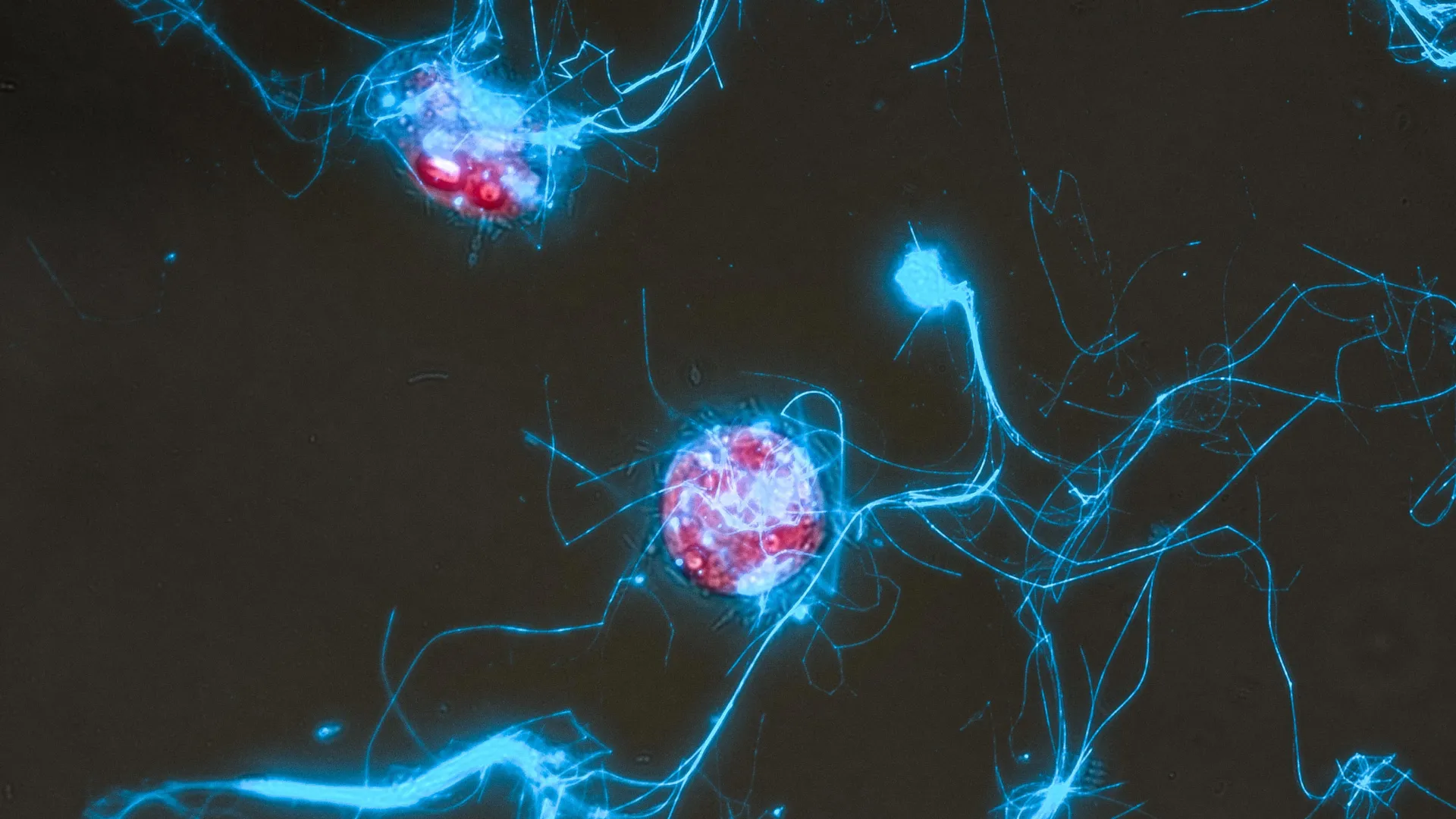Glowing sugars show how microbes eat the ocean's carbon
A glowing sugar probe unveils the secret battles shaping Earth’s marine carbon cycle.
- Date:
- October 19, 2025
- Source:
- Max Planck Institute for Marine Microbiology
- Summary:
- Researchers have developed a light-emitting sugar probe that exposes how marine microbes break down complex carbohydrates. The innovative fluorescent tool allows scientists to visualize when and where sugars are degraded in the ocean. This breakthrough helps map microbial activity and carbon cycling, providing new clues about how the ocean stores and releases carbon.
- Share:

A group of chemists, microbiologists, and ecologists has developed a molecular probe (a molecule designed to detect e.g. proteins or DNA inside an organism) that glows when a sugar is broken down. Writing in the journal JACS, the researchers describe how this innovation makes it possible to observe the microscopic competition between algae and the microbes that consume their sugars in the ocean.
"Sugars are ubiquitous in marine ecosystems, yet it's still unclear whether or how microbes can degrade them all," says Jan-Hendrik Hehemann from the Max Planck Institute for Marine Microbiology and the MARUM -- Center for Marine Environmental Sciences, both located in Bremen. "The new probe allows us to watch it happen live," Peter Seeberger from the Max Planck Institute of Colloids and Interfaces adds.
Sugars and the Ocean's Carbon
Algae take in carbon dioxide and transform it into oxygen and organic matter, with sugars playing a central role in the process. Yet not every sugar is easy for microbes to digest. Some are so complex that only a few microorganisms can break them down. When these tough sugars resist decay, the carbon they contain sinks to the seafloor, where it can remain trapped for centuries until the right enzymes appear. Determining which microbes can digest specific sugars has long challenged scientists, especially in diverse ocean ecosystems.
Watching Sugars Glow
To overcome this problem, the team used automated glycan assembly to create a sugar tagged with two fluorescent dyes. These dyes interact through a process called Förster resonance energy transfer (FRET), acting together like a molecular switch. The probe stays dark when intact, but once an enzyme breaks the sugar's backbone, it emits light. This allows scientists to see exactly where and when the sugar is being degraded. The researchers tested the probe by tracking α-mannan turnover, a polysaccharide (long sugar chain) found in algal blooms. It performed effectively in purified enzyme tests, bacterial extracts, live cell cultures, and even complex microbial communities.
"This research is a wonderful example of interdisciplinary collaboration between Max Planck Institutes. With our FRET glycans, we now have a new tool for researching phytoplankton-bacterioplankton interactions in the ocean," says Rudolf Amann from the Max Planck Institute for Marine Microbiology.
Revealing Hidden Degraders
By enabling the tracking of α-mannan turnover, this glycan probe opens up new avenues for studying microbial metabolism without the need for prior genomic knowledge. Researchers can now pinpoint active degraders in situ, map the progression of glycan breakdown through space and time, and quantify turnover rates in complex communities. This tool paves the way for deeper insights into glycan cycling across ecosystems, from ocean algal blooms to the human gut. By observing which microbes are activated and under what conditions, scientists can link specific enzymatic activities to environmental processes and ultimately gain a better understanding of carbon flux in the ocean.
"Sugars are central to the marine carbon cycle," concludes first author Conor Crawford from the Max Planck Institute of Colloids and Interfaces. "With this FRET probe, we can ask: Who's eating what, where, and when?"
Story Source:
Materials provided by Max Planck Institute for Marine Microbiology. Note: Content may be edited for style and length.
Journal Reference:
- Conor J. Crawford, Greta Reintjes, Vipul Solanki, Manuel G. Ricardo, Jens Harder, Rudolf Amann, Jan-Hendrik Hehemann, Peter H. Seeberger. Activity-Based Tracking of Glycan Turnover in Microbiomes. Journal of the American Chemical Society, 2025; 147 (29): 25799 DOI: 10.1021/jacs.5c07546
Cite This Page: